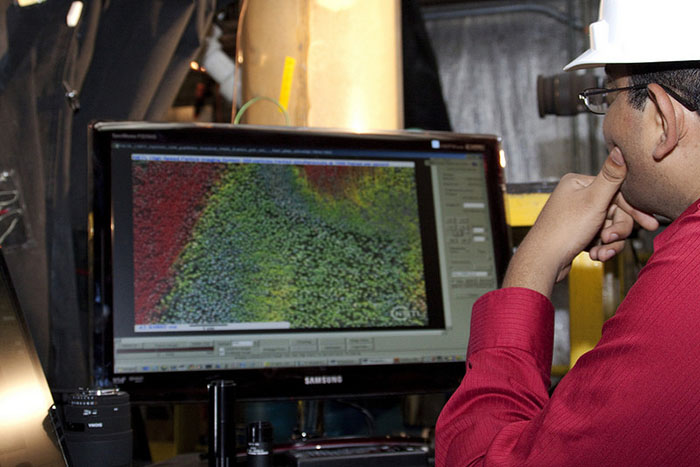
The National Energy Technology Laboratory (NETL) supercomputer injects speed, accuracy, and—perhaps most importantly—confidence into the complex process of simulating emerging energy technologies and new, innovative materials.
Throughout the research community, scientists and engineers conduct computer simulations to discover how a new process or technology might perform when put to practical use and to make critical next-step decisions in technology development. It is imperative that researchers have complete confidence in the outcomes of those simulations. They attain that confidence by running numerous simulations to account for the effect that a range of factors may have on the final results.
The practice of running those multiple simulations is called uncertainty quantification analysis—a process that investigates, identifies, and takes into account the uncertainties in the simulations that are due to a number of possible variables. Those uncertainties could be errors caused by instrumentation, methodology, or other factors.
Mehrdad Shahnam, a research engineer at NETL in Morgantown, said NETL’s supercomputer—a 503 TFlops (trillion floating-point operations per second) behemoth—has put enough simulation power and speed at his fingertips to shave weeks off the time it takes to run simulations for an accurate uncertainty quantification analysis on reacting multiphase flows, the subject of his research.
The issue we face in multiphase flow modeling [the examination of how two or more distinct phases like coal, water, and gas interact when mixed together] is that the computational time for modeling flows, such as those encountered inside of a coal gasifier, is too great,” he explained. “We need to do 30, 40, even up to 100 separate simulations to account for all relevant sources of uncertainty in the results and make decisions on how to proceed. With the supercomputer, we can now turn around in 2 or 3 weeks what would have taken 6 weeks.”
The NETL supercomputer is currently number 94 on the Top500 list of the most powerful computers in the world. Capable of performing 503 trillion operations per second, it processes information a million times faster than most high-end desktop computers.
“Computational resources have to be shared among researchers,” he said. “Now, speed is on our side. We can run more simulations with a faster turnaround.”
Shahnam explained that the ability to run more simulations in less time allows researchers to perform more accurate analysis of the work, and make more informed changes in technologies or materials that will lead to faster, more efficient development of energy innovations.
Chris Guenther, director of NETL’s Computational Science Division, noted that the supercomputer provides more than just speed: it also removes roadblocks to productivity in the form of expanded capacity and availability. Before the supercomputer was installed, a smaller pool of nodes was available to each researcher, and that meant only a handful of simulations could be carried out at one time.
“NETL’s supercomputer provides enough computational cores to allow this work without impacting other researchers,” Guenther said. “In the past, the only way to do this work would be to ask other researchers not to run work for a given time to free up enough cores/nodes to do uncertainty quantification.”
Mathematician, biologist, and historian of science Jacob Bronowski observed that, “Knowledge is an unending adventure at the edge of uncertainty.” At NETL, supercomputing is accelerating pursuit of the unending adventure in ways that yesterday’s researchers could have only imagined.
Each month, NETL and many other of the Energy Department’s national labs showcase their work in various areas that benefit the nation. This story is part of a series on the ways in which supercomputing is changing the way scientists conduct research and how the labs are driving high-performance computing to new heights. For more information, please visit the Energy Department’s national lab webpage.


